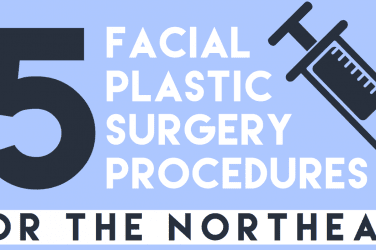Clear and crisp vision is a gift that many of us cherish, and when our eyesight begins to blur or become impaired, we seek ways to restore it. The field of vision correction has seen remarkable advancements over the years, with options like Lasik Kansas City and Smile Laser Eye Surgery paving the way for improved eyesight. In this article, we’ll delve into Smile Laser Eye Surgery, exploring what this procedure entails and what you can expect before, during, and after surgery.
Understanding Smile Laser Eye Surgery
Smile, which stands for Small Incision Lenticule Extraction, is a state-of-the-art laser eye surgery designed to correct vision issues like nearsightedness. It’s hailed as a groundbreaking procedure, offering several advantages that set it apart from traditional Lasik surgery. The average cost of smile eye surgery ranges from $2,000 to $3,000 per eye in the United States.
How Smile Differs from Lasik and Other Procedures
Smile Laser Eye Surgery distinguishes itself from other vision correction procedures like Lasik and PRK (Photorefractive Keratectomy) in several key ways. While Lasik involves the creation of a corneal flap for vision correction, Smile surgery employs a minimally invasive approach. Instead of a flap, a small, precise incision is made, making Smile a preferred option for those seeking a less invasive procedure.
Eligibility for Smile Laser Eye Surgery
Not everyone is a suitable candidate for Smile surgery, and eligibility is determined through a comprehensive eye examination and consultation with an experienced eye surgeon. Factors such as the severity of your refractive error, the thickness of your cornea, and the stability of your prescription are considered to determine if Smile is the right choice for you.
Preparing for Your Smile Surgery
Once you’ve been deemed eligible for Smile Laser Eye Surgery, your journey toward improved vision begins. Before the procedure, you’ll undergo a series of pre-operative assessments to ensure that your eyes are in the best possible condition for surgery.
Initial Consultation with an Eye Surgeon
Your Smile journey starts with an initial consultation with an eye surgeon, a crucial step in the process. During this consultation, you’ll have the opportunity to discuss your medical history, expectations, and any concerns you may have. It’s essential to be transparent with your surgeon to ensure the best possible outcome.
Comprehensive Eye Examination
The comprehensive eye examination that follows will provide your surgeon with a detailed understanding of your eye health and vision needs. This examination includes measuring your corneal thickness, assessing your refractive error, and checking for any underlying eye conditions.
Discussing Medical History, Expectations, and Potential Risks
Your surgeon will also delve into your medical history, exploring factors that could impact your surgery or recovery. They will discuss what you can expect before, during, and after Smile Laser Eye Surgery, as well as potential risks and complications.
Instructions for Preparing for Surgery
In the days leading up to your Smile surgery, you’ll receive specific instructions from your surgeon. This may include discontinuing the use of contact lenses for a specified period to ensure the cornea returns to its natural shape.
The Day of Your Smile Surgery
The day of your Smile Laser Eye Surgery is a significant milestone in your quest for improved vision. While it’s natural to have some apprehension, rest assured that the procedure is known for its speed and minimal discomfort.
What to Expect on the Day of Surgery
When you arrive at the surgical center, you’ll be greeted by the surgical team, who will ensure your comfort and well-being throughout the process. You’ll receive numbing eye drops to ensure you feel no pain or discomfort during the procedure.
The Quick and Minimally Invasive Nature of Smile Surgery
Smile surgery is renowned for its minimal invasiveness. It involves creating a tiny incision in the cornea and removing a small lenticule of tissue to reshape the cornea. The absence of a traditional flap reduces the risk of complications and contributes to a swift recovery.
Addressing Any Last-Minute Questions or Concerns
Before the surgery begins, your surgeon will address any last-minute questions or concerns you may have. It’s essential to feel informed and at ease before proceeding with the procedure.
During the Smile Surgery
The Smile Laser Eye Surgery itself is a remarkable process that unfolds swiftly and precisely. Here’s a brief overview of what happens during the surgery.
Detailed Description of the Smile Surgery Process
The Smile surgery process begins with the creation of a corneal lenticule, a small, precise piece of tissue within the cornea. This lenticule is what will be removed to reshape the cornea and correct your vision.
Advanced Laser Technology for Precision
Laser technology plays a pivotal role in Smile surgery, ensuring the utmost precision. The surgeon uses a femtosecond laser to create the lenticule and a small incision, which typically measures only 2 to 4 millimeters.
Immediate Post-Surgery Experience
Once your Smile Laser Eye Surgery is complete, you’ll be on the path to clearer vision. While the immediate post-surgery experience varies from person to person, there are some common aspects to be aware of.
Leaving the Surgery Center and Returning Home
After the surgery, you’ll be able to leave the surgical center, usually within a few hours. It’s crucial to arrange for someone to drive you home, as your vision may be temporarily compromised immediately after the procedure.
Common Sensations After Smile Surgery
You may experience some minor discomfort, dryness, and light sensitivity in the hours following Smile surgery. These sensations are typically manageable and tend to subside as your eyes heal.
Recommended Post-Operative Care
Your surgeon will provide specific instructions for post-operative care, including the use of prescribed eye drops to facilitate the healing process. It’s essential to adhere to these instructions diligently to ensure a smooth recovery.
Rest and Recovery
In the days immediately following Smile surgery, your eyes will require rest and care. Avoid strenuous activities, swimming, and exposing your eyes to irritants during this period.
First Few Days After Smile Surgery
The first few days after Smile Laser Eye Surgery are crucial for monitoring your progress and ensuring a successful recovery.
Monitoring Visual Improvement
Many patients experience immediate improvements in their vision after Smile surgery. However, it’s essential to understand that your vision may fluctuate during the initial recovery period.
Potential Side Effects
While Smile surgery is generally associated with minimal discomfort and a rapid recovery, some side effects may occur, such as blurry vision, halos, and glare. These effects typically diminish as your eyes heal.
Restrictions on Activities
During the early days of recovery, certain activities are best avoided. Strenuous exercise, swimming, and exposing your eyes to dust or irritants should be postponed until your surgeon gives the green light.
Follow-Up Appointments
Your surgeon will schedule follow-up appointments to assess your progress and ensure that your eyes are healing as expected. These appointments are crucial for monitoring your recovery and addressing any concerns that may arise.
Weeks and Months Following Smile Surgery
As you progress through the weeks and months following Smile Laser Eye Surgery, you’ll likely continue to experience improvements in your vision and overall eye comfort.
Continued Improvement in Vision Quality
The quality of your vision will likely continue to improve over time. Many patients find that they no longer need glasses or contact lenses to see clearly.
Adherence to Prescribed Medications and Eye Care Instructions
It’s essential to remain diligent in adhering to any prescribed medications and post-operative eye care instructions provided by your surgeon. This ensures the best possible outcome and minimizes the risk of complications.
Monitoring for Persistent Side Effects or Complications
While Smile surgery is known for its safety and effectiveness, it’s essential to monitor your eyes for any persistent side effects or complications. If you have any concerns or notice changes in your vision, contact your surgeon promptly.
Potential Benefits and Risks of Smile Surgery
Like any medical procedure, Smile Laser Eye Surgery comes with potential benefits and risks that should be considered.
Discussing the Advantages of Smile Surgery
The advantages of Smile surgery are substantial. It offers a minimally invasive approach to vision correction, rapid recovery, and minimal discomfort. Many patients find that their vision is significantly improved, reducing or eliminating the need for glasses or contact lenses.
Potential Risks and Complications
While Smile surgery is generally safe, there are potential risks and complications to be aware of. These can include dry eyes, temporary visual disturbances, and infection. However, the overall risk profile for Smile surgery is low, and the vast majority of patients experience a smooth recovery.
The Importance of Realistic Expectations
Maintaining realistic expectations is crucial when considering Smile Laser Eye Surgery near me. While it can provide significant improvements in vision, it may not achieve perfect vision for everyone. Your surgeon will discuss the expected outcomes during your consultation.
Conclusion
Smile Laser Eye Surgery is a remarkable procedure that offers the promise of improved vision without the need for glasses or contact lenses. Understanding what to expect before, during, and after surgery is essential for anyone considering this vision correction option.
If you’re tired of relying on corrective lenses and are seeking a minimally invasive solution to your vision issues, Smile surgery may be the answer. Consult with an experienced eye surgeon to discuss your eligibility and explore the potential life-changing benefits of Smile Laser Eye Surgery. Remember that each person’s experience is unique, but the goal remains the same: to see the world with newfound clarity and freedom from the constraints of glasses and contact lenses.







